Artistic Inspirations
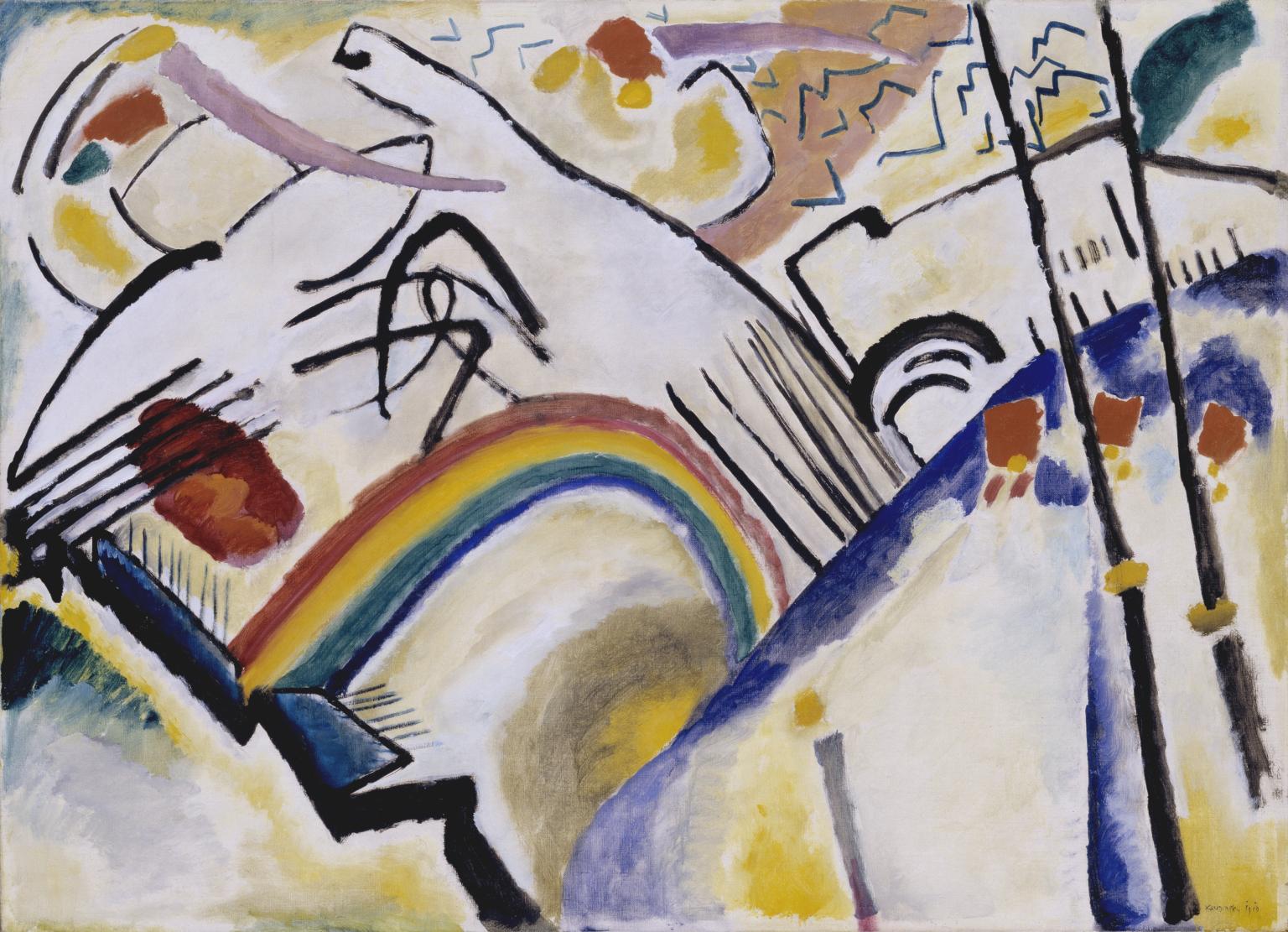
Abstract Art
Abstract art is art that does not attempt to represent an accurate depiction of a visual reality but instead use shapes, colours, forms and gestural marks to achieve its effect.
Strictly speaking, the word abstract means to separate or withdraw something from something else.
The term can be applied to art that is based an object, figure or landscape, where forms have been simplified or schematised.
It is also applied to art that uses forms, such as geometric shapes or gestural marks, which have no source at all in an external visual reality. Some artists of this ‘pure’ abstraction have preferred terms such as concrete art or non-objective art, but in practice the word abstract is used across the board and the distinction between the two is not always obvious.
Abstract art is often seen as carrying a moral dimension, in that it can be seen to stand for virtues such as order, purity, simplicity and spirituality.
Cubist and fauvist artists depended on the visual world for their subject matter but opened the door for more extreme approaches to abstraction.
Pioneers of ‘pure’ abstract painting were Kazimir Malevich and Piet Mondrian from about 1910–20. A pioneer of abstract sculpture, which took reference from the modern world was the Russian constructivist Naum Gabo.

Natalia Goncharova
Natalia Goncharova not only achieved success in her life-time but today numbers alongside Georgia O’Keefe, Louise Bourgeois and Jenny Saville as one of the most expensive female artists at auction. The Russian painter and designer, whose first solo retrospective in the United Kingdom is on view at the Tate Modern until October, is a prime example of an avant-garde artist who did not merely follow the course of art history but changed it.
While a student in the sculpture workshop of Paolo Troubetzkoy at the Moscow School of Painting, Sculpture and Architecture she met her lifelong partner Mikhail Larionov. At his suggestion she switched to painting, entering the most progressive circles of the Moscow art scene.
As a founding member of the Jack of Diamonds and Donkey’s Tail groups Goncharova stood at the forefront of the Russian avant-garde and through her membership of Der Blaue Reiter joined the cohorts of international modernism. Goncharova’s Street in Moscow (1909), sold at Sotheby’s New York for $6,354,500 in 2011 shows her deep knowledge of the latest trends in contemporary European art but with her own distinctive take on modernist aesthetics.
Standing at the crossroads between East and West, poised between international and national aesthetics, Goncharova and Larionov invented their own, profoundly Russian, artistic language. Larionov’s Russian-era canvas Still Life (sold at Sotheby’s in June 2018 for £2.2million), represents the culmination of their shared neo-primitivist period. They were among the first Russian artists to incorporate the ideas of French cubism and Italian futurism and in 1912–1914, their experiments resulted in a series of Rayonist paintings – a first vital step in the rapid development of Russian abstract art.
Revolutionary, independent, transgressive, Goncharova was often scapegoated and attacked by the Russian press as a symbol of moral decay and degradation. In 1910 she was charged with indecency for painting and exhibiting nudes (as her male colleagues did) and accused of heresy for her interpretations of religious themes.
Undeterred, in 1913 she joined the ranks of Berthe Morisot, Mary Cassatt, Julia Margaret Cameron and Suzanne Valodon as one of the exceptionally few female artists to have held a solo exhibition. This Moscow exhibition comprised over 800 works, including Nature Morte Aux Fruits, sold at Sotheby’s London for £2,281,250 in 2008.
Throughout her long career, Goncharova never stopped experimenting with styles, ideas, techniques, and forms. She masterfully incorporated motifs from peasant embroidery and traditional woodblock prints into her work, mixing high and low culture. She freely combined elements from the applied arts, for so long dismissed as belonging to the women’s realm. Russianness remained at the core of her identity even after she moved to France.
Invited to Paris by the notorious impresario Serge Diaghilev in 1914 to create set designs and costumes for his new ballet Le Coq d’Or, she became an immediate sensation and arbiter of taste among the Parisian beau monde.
A decades-long collaboration with the Ballets Russes opened the doors to the world of high fashion: in the 1920s she was appointed designer at the couture house Myrbor, and today her designs can be found in the collections of the Victoria and Albert Museum in London, Musée Galliera in Paris, and the Metropolitan Museum in New York. Lady with a Parasol sold at Sotheby’s New York for $1,720,000 in 2007 brilliantly demonstrates Goncharova’s understanding of design and the female form.
Today Natalia Goncharova’s oeuvre forms an integral part of the history of international modernism, and her works can be found in the collections of the Guggenheim and Museum of Modern Art in New York, the Centre George Pompidou in Paris and the Tate Gallery in London.
from Sothebys Website
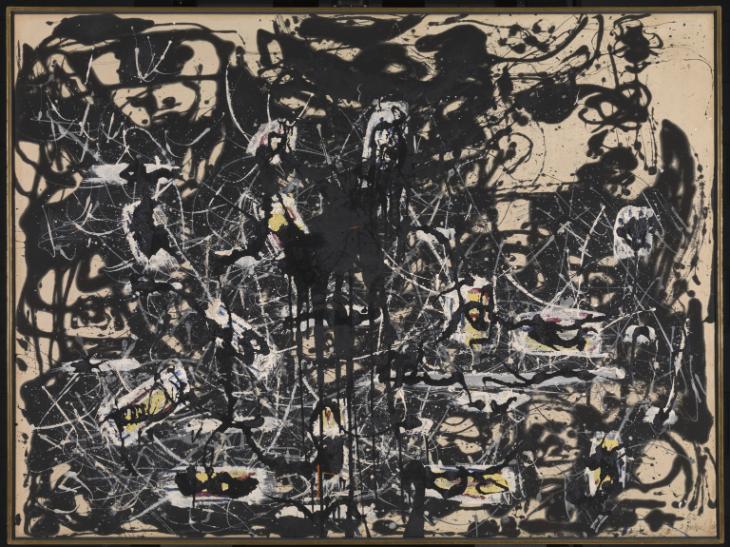
Abstract Expressionism
Abstract expressionism is the term applied to new forms of abstract art developed by American painters such as Jackson Pollock, Mark Rothko and Willem de Kooning in the 1940s and 1950s. It is often characterised by gestural brush-strokes or mark-making, and the impression of spontaneity.
The abstract expressionists were mostly based in New York City, and also became known as the New York school. The name evokes their aim to make art that while abstract was also expressive or emotional in its effect. They were inspired by the surrealist idea that art should come from the unconscious mind, and by the automatism of artist Joan Miró.
TYPES OF ABSTRACT EXPRESSIONISM
Within abstract expressionism were two broad groupings: the so-called action painters, who attacked their canvases with expressive brush strokes; and the colour field painters who filled their canvases with large areas of a single colour.
The action painters were led by Jackson Pollock and Willem de Kooning, who worked in a spontaneous improvisatory manner often using large brushes to make sweeping gestural marks. Pollock famously placed his canvas on the ground and danced around it pouring paint from the can or trailing it from the brush or a stick. In this way the action painters directly placed their inner impulses onto the canvas.
The second grouping included Mark Rothko, Barnett Newman and Clyfford Still. They were deeply interested in religion and myth and created simple compositions with large areas of colour intended to produce a contemplative or meditational response in the viewer.
In an essay written in 1948 Barnett Newmann said: ‘Instead of making cathedrals out of Christ, man, or ‘’life’’, we are making it out of ourselves, out of our own feelings’. This approach to painting developed from around 1960 into what became known as colour field painting, characterised by artists using large areas of more or less a single flat colour.
from Tate Museum Website
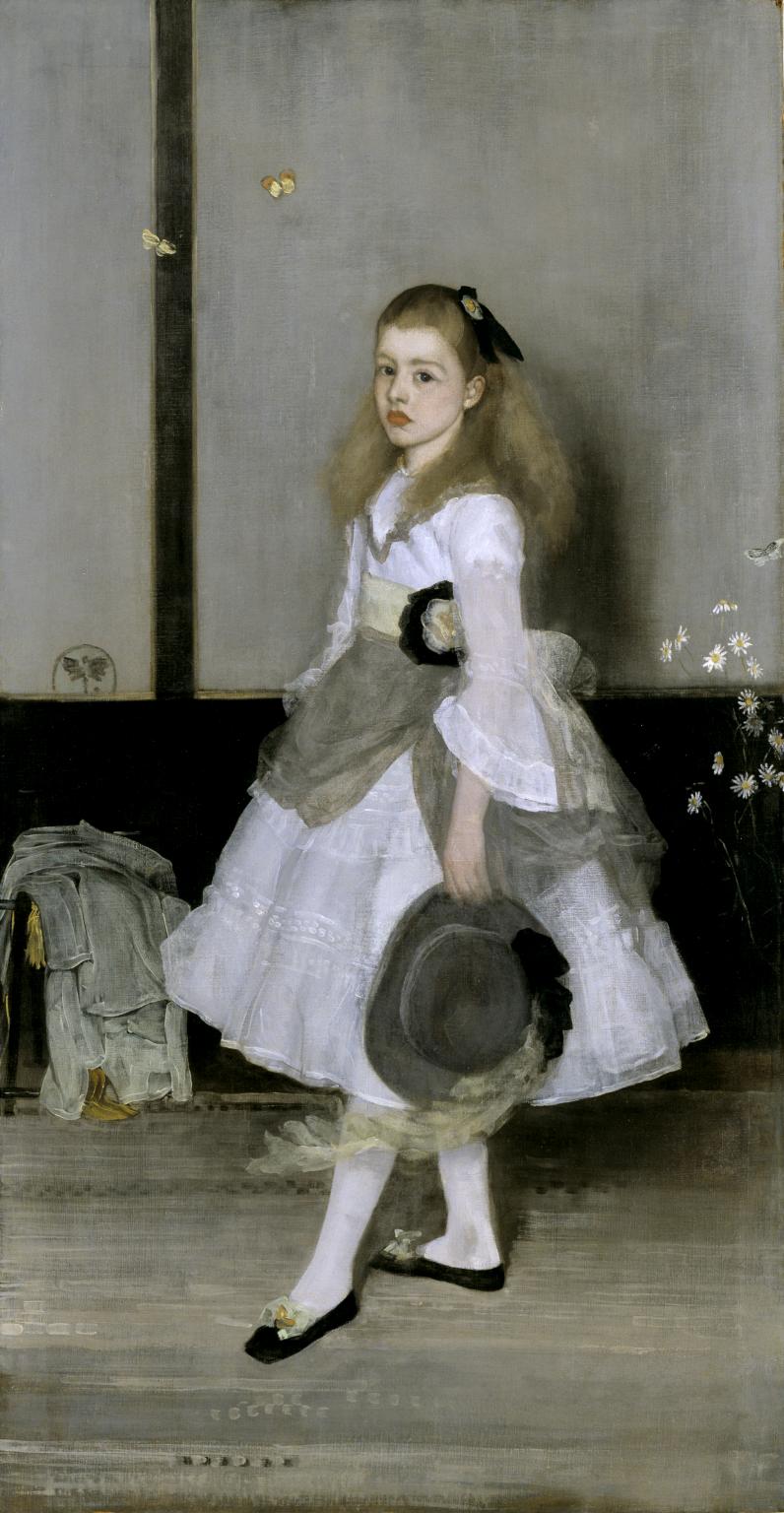
Aesthetic movement
The aesthetic movement was a late nineteenth century movement that championed pure beauty and ‘art for art’s sake’ emphasising the visual and sensual qualities of art and design over practical, moral or narrative considerations.
he aesthetic movement flourished in Britain in the 1870s and 1880s and was important equally in fine and applied arts.
In painting it is exemplified by J.M. Whistler, Albert Moore and certain works by Frederic, Lord Leighton. Japanese art and culture was an important influence, especially on Whistler and aesthetic design.
In applied arts it can be seen as part of the revolution in design initiated by William Morris, with the foundation of Morris & Co in 1862. From 1875 the ideals of aestheticism were commercialised by the Liberty store in London, which later also popularised art nouveau.
Critic Walter Hamilton was the first writer to identify the movement, publishing The Aesthetic Movement in England in 1882. As well as writing about key figures associated with the movement, he also provides descriptions of contemporary responses to it.
from Tate Museum Website
Artistic Inspirations
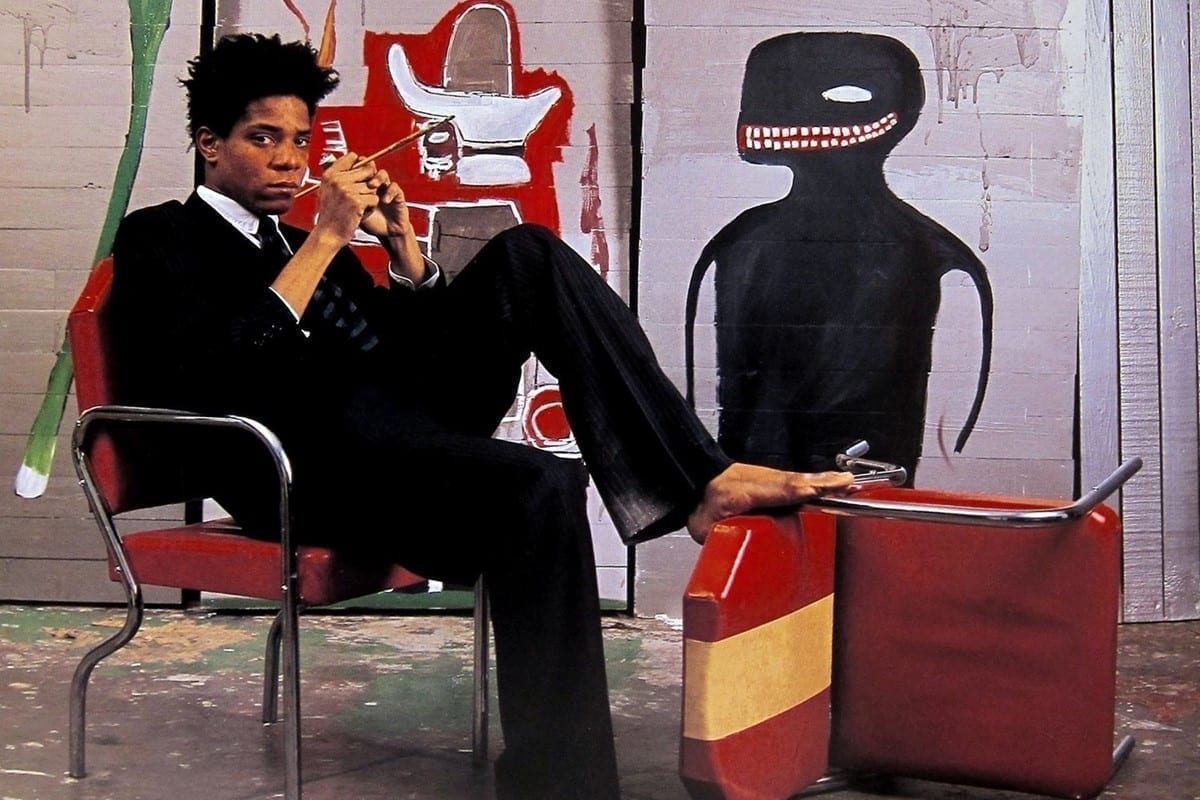
Jean-Michel Basquiat
Brooklyn-born painter Jean-Michel Basquiat came out of New York’s vibrant downtown scene of the late 1970s to become one of the most influential and internationally renowned artists of the late 20th century. His street art and Neo-Expressionist works on canvas and paper as well as on random objects and surfaces are characterized by visually striking and psychologically powerful combinations of anatomical diagrams, charged words and cryptic phrases, numerals, pictograms, commercial graphic art, allusions to African history and African-American pop culture, as well as stick figures and maps.
Born of Afro-Caribbean parents on 22 December 1960, Basquiat was exposed to art by his mother and some of his teachers but received no formal art education. After dropping out of high school and leaving home in 1976, he attracted attention with the enigmatic graffiti he created under the name SAMO, befriending artists and downtown luminaries and beginning to paint and draw with more focused effort.
A first public group show in a vacant Times Square building in June 1980 eventually led to his first solo exhibition in 1982. Success among the contemporary art-loving public was immediate, while critics both lauded Basquiat as a genius and derided him as a product of the newly booming market.
In the mid-1980s, the artist collaborated on several works with the most famous artist of the time, Andy Warhol. He died of a heroin overdose on 12 August 1988. The influence of Basquiat’s complex aesthetic on subsequent generations of artist remains incalculable.
His works can be found in museum collections around the world including The Broad, Los Angeles, the Museu d’Art Contemporani de Barcelona, and The Andy Warhol Museum, Pittsburgh. According to Sotheby’s Mei Moses index, the average compound annual return for works by Basquiat resold at auction between 2003 and 2017 was 17.4%, and 96.5% of 171 such works increased in value.
from Sothebys Website
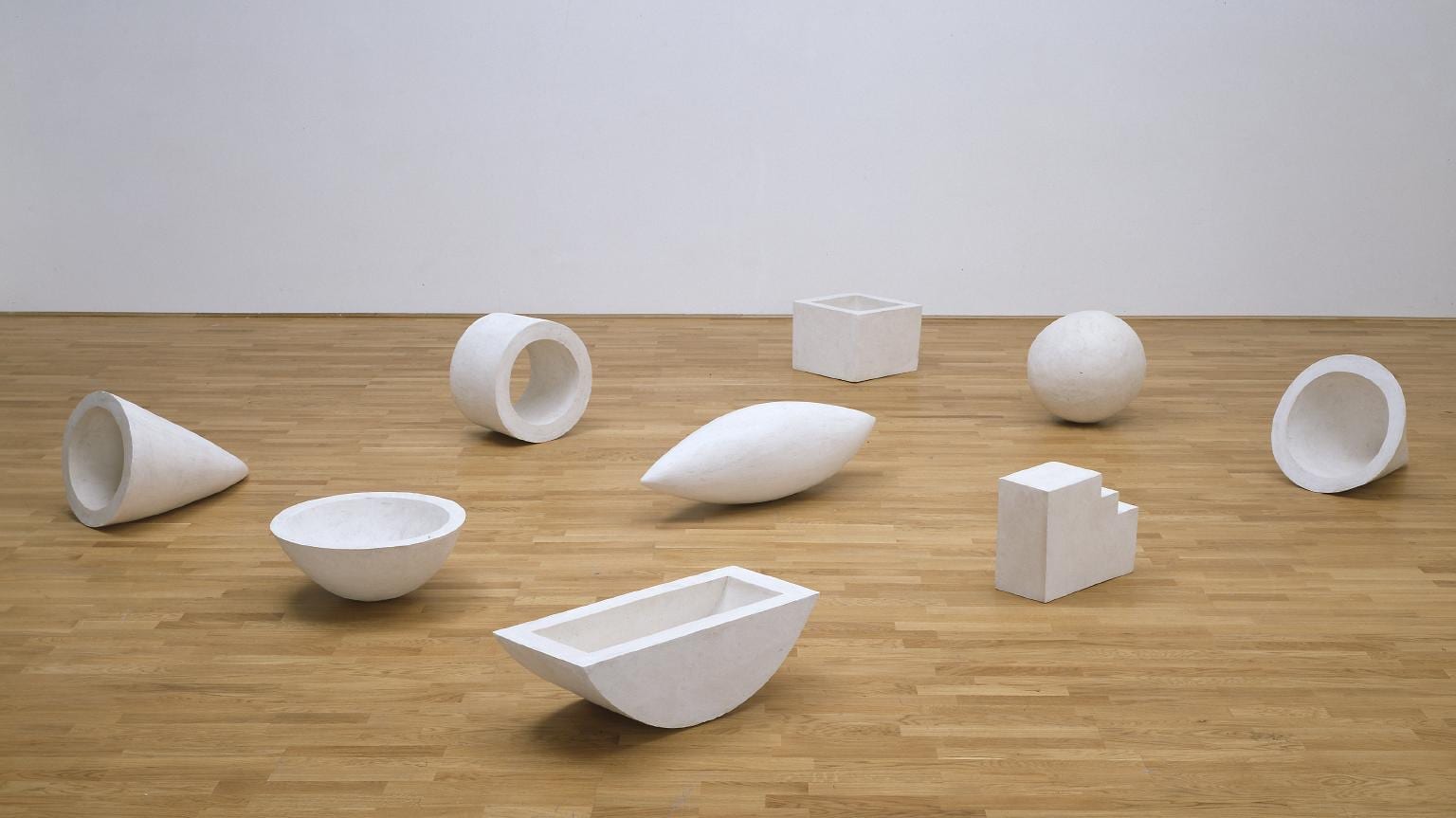
Aesthetics
Aesthetics is the branch of philosophy that is concerned with the nature of beauty and taste
What constitutes beauty has been a much-debated topic in Western art. In Grecian times, the philosopher Aristotle thought beauty was about function and proportion, while in the early 1700s, the Earl of Shaftesbury argued that goodness and beauty are one and the same. In 1735 the German philosopher Alexander Baumgarten posed the question ‘What is beauty?’ and it is from this moment that our modern reading of the word begins to evolve.
He used the word ‘aesthetics’ to describe his process of understanding what makes something beautiful or ugly and how we make these judgements. The term ‘aesthetcis’ is derived from the Greek word ‘aesthesis’ meaning perception.
Later, the philosopher Immanuel Kant sought to clarify what aesthetics meant by writing Critique of Judgement, in which he tried to work out how to analyse beauty, as well as taste and the Sublime. He concluded that there is no scientific rule for determining what beauty is, as it is subjective, and in the eye of the beholder.
from Tate Museum Website
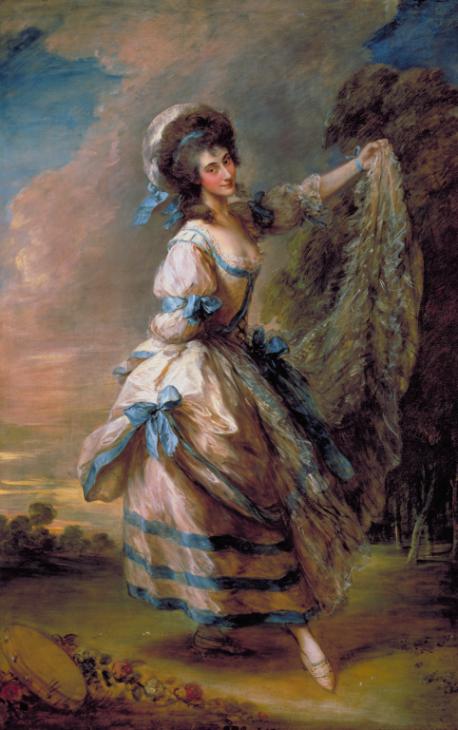
Rococo
Light, sensuous, intensely decorative French style developed in the early eighteenth century following death of Louis XIV and in reaction to the Baroque grandeur of Versailles
The name comes from French rocaille, rock-work, based on forms of sea shells and corals. In practice Rococo is a style of short curves, scrolls and counter curves, often elaborated with fantasy.
In fine art, Rococo prettiness, gaiety, curvaceousness and sensuality is exemplified in the work of François Boucher, Jean-Honoré Fragonard and Jean-Antoine Watteau and in the sculpture of Clodion.
Rococo was brought to Britain by Philip Mercier, who was appointed as principal painter to the Prince and Princess of Wales. A robust British version of the style can be seen in the work of William Hogarth, but its influence in Britain is perhaps best exemplified in the dazzling female portraits of Thomas Gainsborough.
from Tate Museum Website
Artistic Inspirations

Contemporary art
The term contemporary art is loosely used to refer to art of the present day and of the relatively recent past, of an innovatory or avant-garde nature.
In relation to contemporary art museums, the date of origin for the term ‘contemporary art’ varies.
from Tate Museum Website
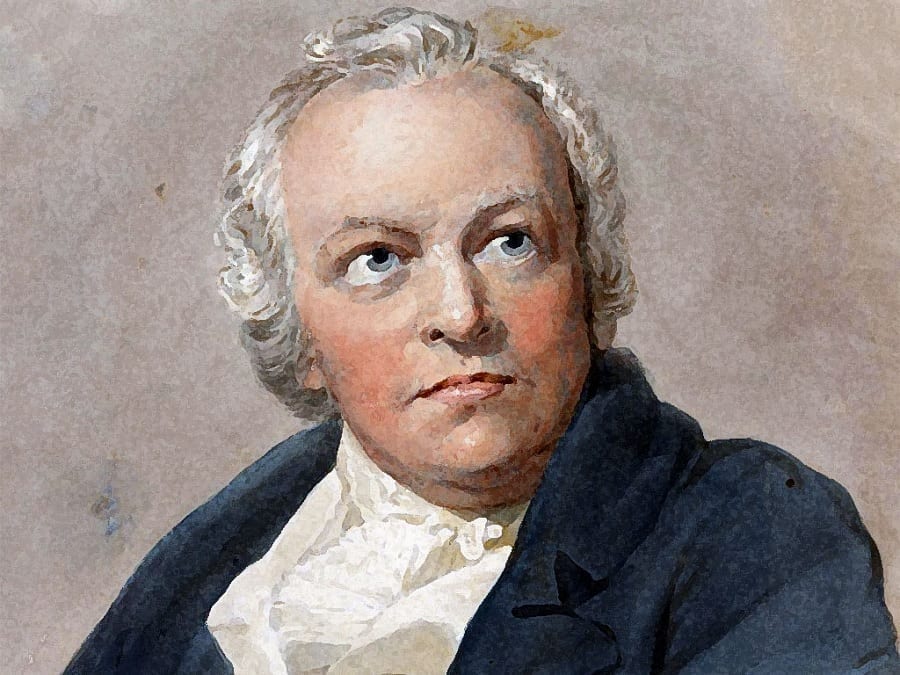
William Blake
English poet, printmaker and painter William Blake was a crucial figure of the early Romantic period. His synthesis of serious spirituality with a deep questioning of organized religion provided the Romantic era with a prophetic figure whose oeuvre exemplified the mystical investigation of the period, though he was not recognized as a seminal figure until after his death. Even within its Modernity, his work makes reference to antiquity; he consistently acknowledged the Renaissance masters Michelangelo and Dürer in an attempt to put forth a universal Gothic Christian style.
Born in 1757 in London, England, Blake studied at the drawing academy of Henry Pars before apprenticing with the engraver James Basire, and later studying at the Royal Academy. Even at school, Blake exuded a rebellious spirit, openly criticizing the Academy’s president, Joshua Reynolds.
Blake turned to relief etching prints and engravings for many of his works, producing mysterious, dream like imagery with dark figures and staunch contrasts that explore the universal mysteries of human existence. His works presented amalgams of vaguely Christian references, sculptural figures reminiscent of Renaissance paintings and dark, brooding characters with ambiguous intentions. His works garnered both admiration and disdain; some viewed his imaginative works as creative and introspective, while others criticized his seemingly blasphemous or shocking imagery.
Since Blake’s death, artists, poets and psychologists have revised the general understanding of his works; American singer and songwriter Patti Smith edited an anthology of Blake’s work in 2007, has performed his poetry and has given lectures on his career, while psychoanalyst June Singer has reassessed Blake’s ambition to synthesize mind and spirit in his later works.
His system of symbols and allegory have been put to use by various movements and groups since his death, including the nineteenth century “free love” movement, while the Beat poets of the 1950s and ’60s consistently made reference to Blake’s work. Blake’s artworks can be found in major museums around the world including the Tate Gallery, London, the Metropolitan Museum of Art, New York, and the Art Institute and Chicago, among others.
from Sothebys Website
Artistic Inspirations
Impressionism
Impressionism developed in France in the nineteenth century and is based on the practice of painting out of doors and spontaneously ‘on the spot’ rather than in a studio from sketches. Main impressionist subjects were landscapes and scenes of everyday life
from Tate Museum Website
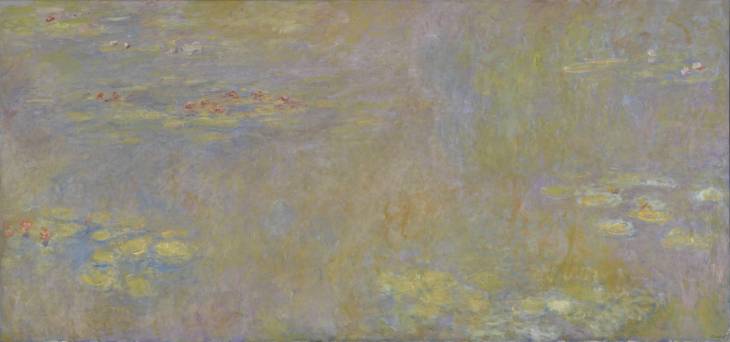
Conceptual art
Conceptual art is art for which the idea (or concept) behind the work is more important than the finished art object. It emerged as an art movement in the 1960s and the term usually refers to art made from the mid-1960s to the mid-1970s.
Although the term ‘concept art’ had been used in the early 1960s (Henry Flynt of the Fluxus group described his performance pieces as ‘concept art’ in 1961), it was not until the late sixties that conceptual art as a definable movement emerged.
- Joseph Kosuth’s series Titled (Art as Idea as Idea) 1966–7;
- the proposal for an exhibition Air Show Air/Conditioning 1966–7 by English artists Terry Atkinson and Michael Baldwin (founder members of the group Art & Language);
- John Baldessari’s word paintings exhibited in LA in 1968;
- and important group exhibitions such as that organised by art dealer Seth Siegelaub in New York in 1969, January 1-31: 0 Objects, 0 Painters, 0 Sculptors reflected this growing ideas-based approach to art-making.
The term conceptual art was first used to reference this distinct movement in an article written by Sol LeWitt in 1967:
In conceptual art the idea or concept is the most important aspect of the work. When an artist uses a conceptual form of art, it means that all of the planning and decisions are made beforehand and the execution is a perfunctory affair.
LeWitt, ‘Paragraphs on Conceptual Art’, Artforum Vol.5, no. 10, Summer 1967, pp. 79-83
In 1973 a pioneering record of the early years of the movement appeared in the form of a book, Six Years, by the American critic Lucy Lippard. The ‘six years’ were 1966–72. The long subtitle of the book referred to ‘so-called conceptual or information or idea art’.
CONCEPTUAL ARTWORKS
Conceptual art can be – and can look like – almost anything. This is because, unlike a painter or sculptor who will think about how best they can express their idea using paint or sculptural materials and techniques, a conceptual artist uses whatever materials and whatever form is most appropriate to putting their idea across – this could be anything from a performance to a written description.
Although there is no one style or form used by conceptual artists, from the late 1960s certain trends emerged.
Read the captions in the artworks below to find out about some of the main ways conceptual artists explored and expressed their ideas.
from Tate Museum Website
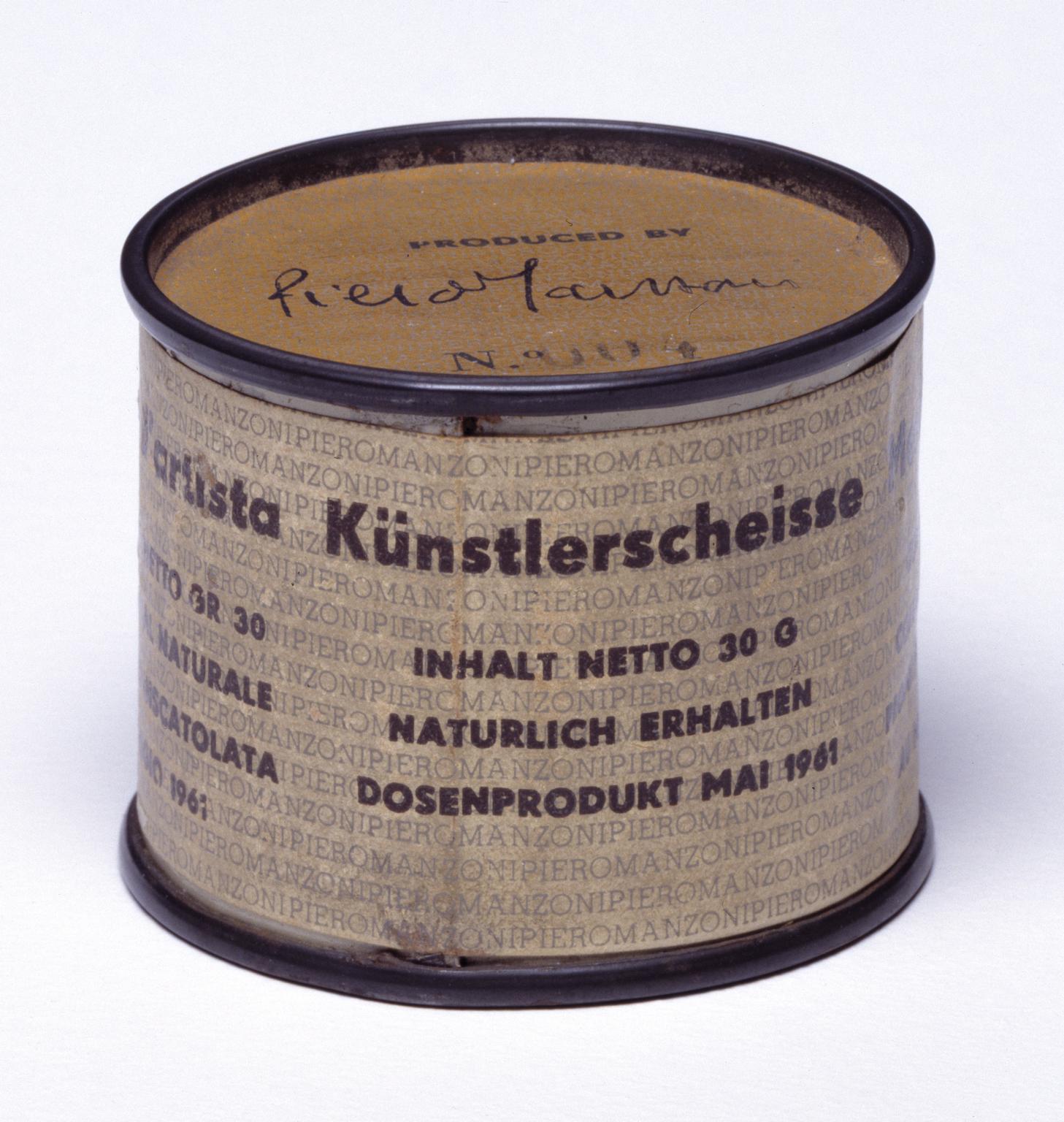
Banksy
The anonymous graffiti artist known as Banksy is perhaps the most controversial street artist of today. He is famous for his stenciled graffiti works, which appear in public spaces around the world. His use of stenciling developed from a need to complete a work quickly, namely to avoid being caught vandalizing by police.
Banksy often uses multi-layered stencils to employ multiple colors, and he frequently incorporates permanent environmental fixtures, such as street signs and architectural elements, into his work. Marked by dark humor, satire, and political commentary, much of his street art has become viral on the Internet. His most notable early work was the result of a trip to Palestine and the West Bank, where he stenciled nine images on the Bethlehem Wall.
Despite his stealth presence, Banksy has become a mainstream phenomenon. In 2010 Banksy directed Exit Through the Gift Shop, a chronicle of the underground world of street art, which was nominated for Best Documentary at the Oscars. In 2015, he opened Dismaland Bemusement Park, a temporary exhibition of an inverted, dystopian Disneyland.
Although Banksy has continuously emphasized an aversion to the art world through his output, he also produces traditional works on canvas and prints as well as branded merchandise such as t-shirts. His cultural significance, widespread popularity, and, certainly, the mystery of his identity have all contributed to the desirability of his art.
According to Sotheby’s Mei Moses, the average compound annual return for Banksy is 8.5%, with 76.5% of works increasing in value.
from Sothebys Website
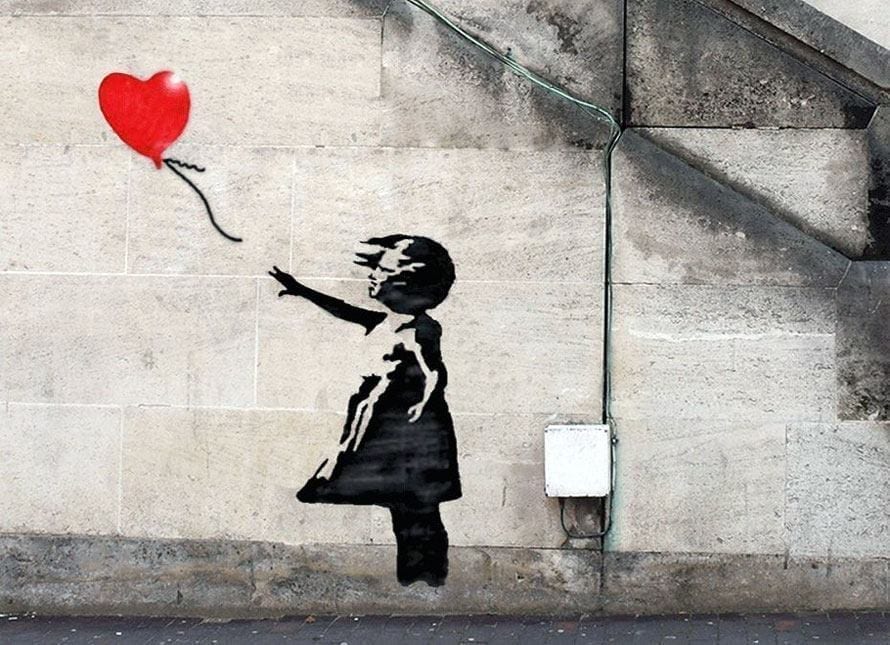
Pointillism
Pointillism was a revolutionary painting technique pioneered by Georges Seurat and Paul Signac in Paris in the mid-1880s. It was a reaction against the prevailing movement of Impressionism, which was based on the subjective responses of individual artists. Pointillism, by contrast, demanded a much more scientific approach – as we’ll see below.
Along with Seurat and Signac, leading members of the group included their fellow Frenchmen, Henri-Edmond Cross and Maximilien Luce. Other well-known artists who briefly made works in Pointillist style were van Gogh and, early in their careers, Picasso, Mondrian and Kandinsky.
1. Points of pure colour: Pointillism involved the application of paint in carefully placed dots of pure, unmixed colour. According to Seurat and Signac, these would be blended by the viewer’s eye to create a more striking image than any made after mixing colours conventionally on a palette.
Seurat – whose life was cut short by diphtheria, aged 31 – created two of the undoubted masterpieces of the movement: Un Dimanche Après-Midi À L’île De La Grande Jatte (1884-86, now in the Art Institute of Chicago) and Une Baignade, Asnières (1884, in the National Gallery in London).
2: Science of the eye: As important to Pointillism as any artist was the French chemist, Michel Eugène Chevreul – and his book, Principles of Harmony and Contrast of Colours. Employed by a Parisian tapestry works that wished to improve the strength of its colours, he discovered that the issue wasn’t the dyes being used but the way different hues were being combined.
In short, the visual impact of a tapestry was actually a matter of optics, not chemistry. It depended on the juxtaposition of complementary colours (which enhanced each other’s intensity) – blue and orange, for example. Seurat and the Pointillists drew heavily on Chevreul’s discoveries, applying to paints what the chemist had found in threads.
3. ‘Painting by dots’: The movement’s name derives from a review of Seurat’s work by the French art critic, Félix Fénéon, who used the expression peinture au point (“painting by dots”). Seurat actually preferred the label “Divisionism” – or, for that matter, Chromoluminarism – but it was Pointillism that stuck. As for Fénéon, one of the movement’s great champions, he’d go on to be immortalised in a celebrated canvas, Signac’s Portrait of Félix Fénéon, from 1890, now part of the Museum of Modern Art (MoMA) collection in New York.
4. Meticulous technique: Pointillism is regarded as a Neo-Impressionist movement. Which is to say, it grew out of – and beyond – Impressionism. Works such as Un Dimanche Après-Midi À L’île De La Grande Jatte were even exhibited as part of the eighth (and final) Impressionist exhibition, in Paris in May 1886. Like members of that earlier movement, Pointillists wished to render optical phenomena. However, they renounced fluid, spontaneous strokes in favour of a measured, meticulous technique.
5. Van Gogh and Pointillism: Vincent van Gogh, who knew Seurat and Signac from his time living in Paris from 1886 to 1888, had a brief association with Pointillism. Certainly some of his paintings from that Parisian period – such as 1887’s Self-Portrait – show hints of its influence. (After a visit to Seurat’s studio one day, he claimed to have experienced a “revelation of colour”.) It’s generally agreed, however, that van Gogh was too restless a spirit for a style as technical as Pointillism.
Another famous artist who briefly embraced Pointillism around this time was Camille Pissarro. Turning his back on the Impressionist style with which he’d made his name, he was hailed by one Parisian critic as “a master who continually and courageously adapts to new theories”.
6. Music of the dots: Musical metaphors were occasionally used to help describe Pointillism, most straightforwardly that of the coloured dots being in a kind of harmony. Signac – who took over as the movement’s de facto leader after Seurat’s death in 1891 – likened the process of choosing his colours to that of a composer considering each instrument while creating a symphony.
7. From Pointillism to Fauvism: With its strident colour combinations, Pointillism was a clear influence on Fauvism, among other movements: Henri Matisse’s Luxe, Calme et Volupté (1904, now in the Musée d’Orsay) is often cited as an important work of transition between the two.
Beyond the art world, Un Dimanche Après-Midi À L’île De La Grande Jatte would inspire the hit Stephen Sondheim stage musical, from 1984, Sunday in the Park with George.
from Sothebys Website
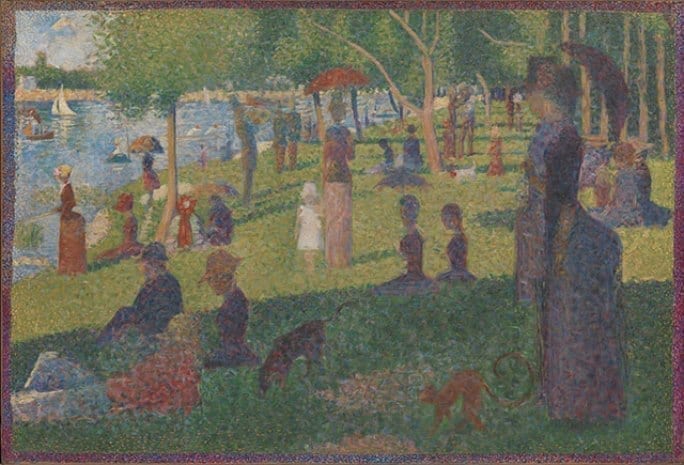
Artistic Inspirations
Alabaster
Alabaster is a soft white or translucent stone, it is a fine-grained marble-like variety of gypsum.
Its softness enables it to be carved readily into elaborate forms making it a popular material for carved sculpture. It is also often used for ornamental stonework, though its solubility in water makes it unsuitable for outdoor work.
from Tate Museum Website
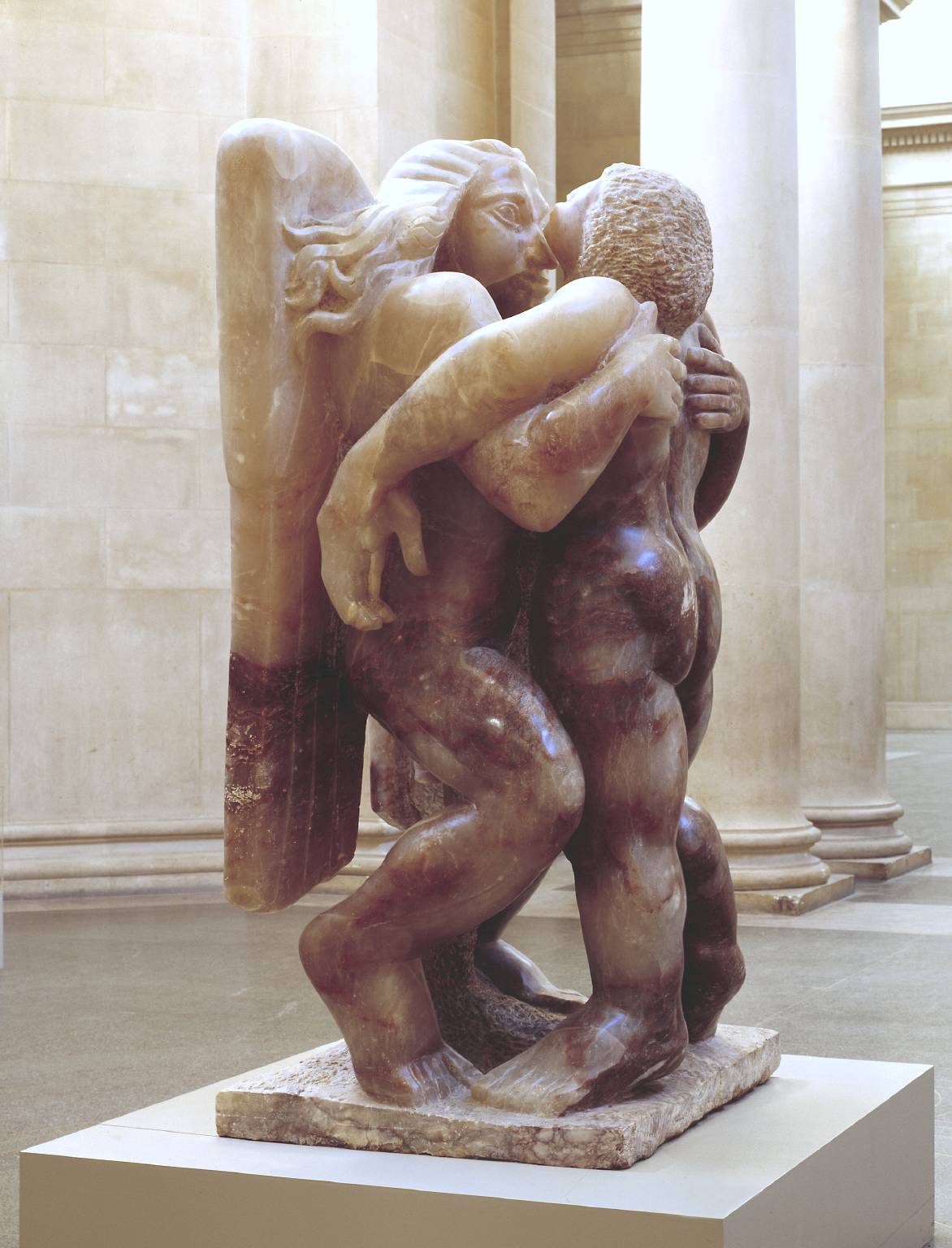
Louise Bourgeois
Louise Bourgeois was a prolific 20th century artist who experimented with a wide range of media, materials, subjects and themes; as such, categorizing or situating her work in one distinct artistic movement remains nearly impossible. She has been linked to Surrealism, American Abstraction and Feminist Art and is well known for her large-scale sculptured and installations, though she also produced many paintings, drawings and textiles. Her work mined themes of family, motherhood, sexuality and the subconscious and the experience of the female body.
Bourgeois was born into Paris in 1911, the middle of three children. Her parents Joséphine Fauriaux and Louis Bourgeois ran a family antique tapestry gallery and their strained relationship had a profound and traumatizing influence on the young Louise, as she witnessed her father’s numerous romantic infidelities and her mother’s feigned ignorance.
Bourgeois referred to her practice as a kind of therapy, imbuing much of her work with ideas of jealousy, anger and loneliness, while simulataneously exploring underlying sexual expression.
Her early work focused on printmaking and painting, but she expanded her approach after delving into psychoanalysis, and turned to sculpting in plaster and wood on varying scales. Her marriage to art historian Robert Goldwater and the complexities of her role as wife and mother became central focal points for artistic production.
But as her confidence grew, so did the range of her works and her footing as a major voice in the New York art world, hosting “Sunday Bloody Sunday” at her Chelsea home: meetings – named for her humor and ruthlessness – wherein she would critique and aid young artists and students.
Her influence on later artists is only matched by her collaboration with younger generations; Do Not Abandon Me, her collaborative project with Tracey Emin was exhibited months after Bourgeois death, and celebrates the joy and pain of human existence.
The Museum of Modern Art in New York held Bourgeois’ first retrospective in 1982, and Bourgeois subsequently forged her career forward at the age of 70 with a newfound vitality and energy. Her work has sold for tens of millions of dollars. Major institutions including the Tate, London; the Solomon R. Guggenheim Museum, New York; the Brooklyn Museum; the San Francisco Museum of Modern Art, and many others, have in recent decades recognized her work as a cornerstone of 20th-century art.
from Sothebys Website
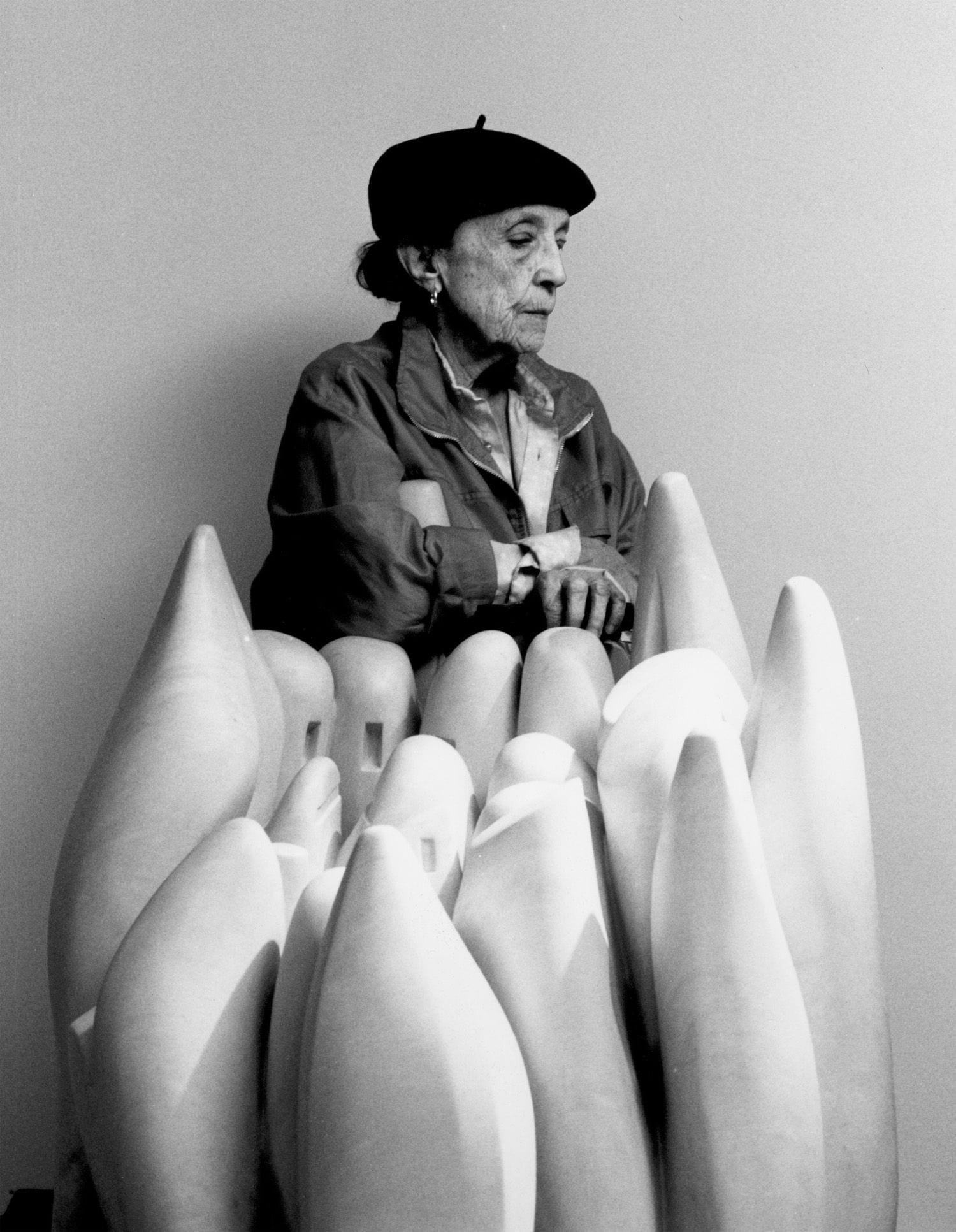
Artistic Inspirations
Renaissance
French word meaning rebirth, now used in English to describe the great revival of art that took place in Italy from about 1400 under the influence of the rediscovery of classical art and culture.
The Renaissance reached its peak (known as the High Renaissance) in the short period from about 1500–1530 in the work of Michelangelo, Leonardo and Raphael. The Renaissance style then underwent a myriad of successive transformations in Mannerism, Baroque, Rococo, neoclassicism, and the Romantic movement.
The work of Raphael may be seen as representing the purest form of the Renaissance style and he was held up as prime model in the art academies until the mid-nineteenth century when artists turned their back on this classically governed approach. The revolt can be seen in movements such as the Pre-Raphaelites (who drew inspiration from the medieval art), realism, naturalism and impressionism.
from Tate Museum Website
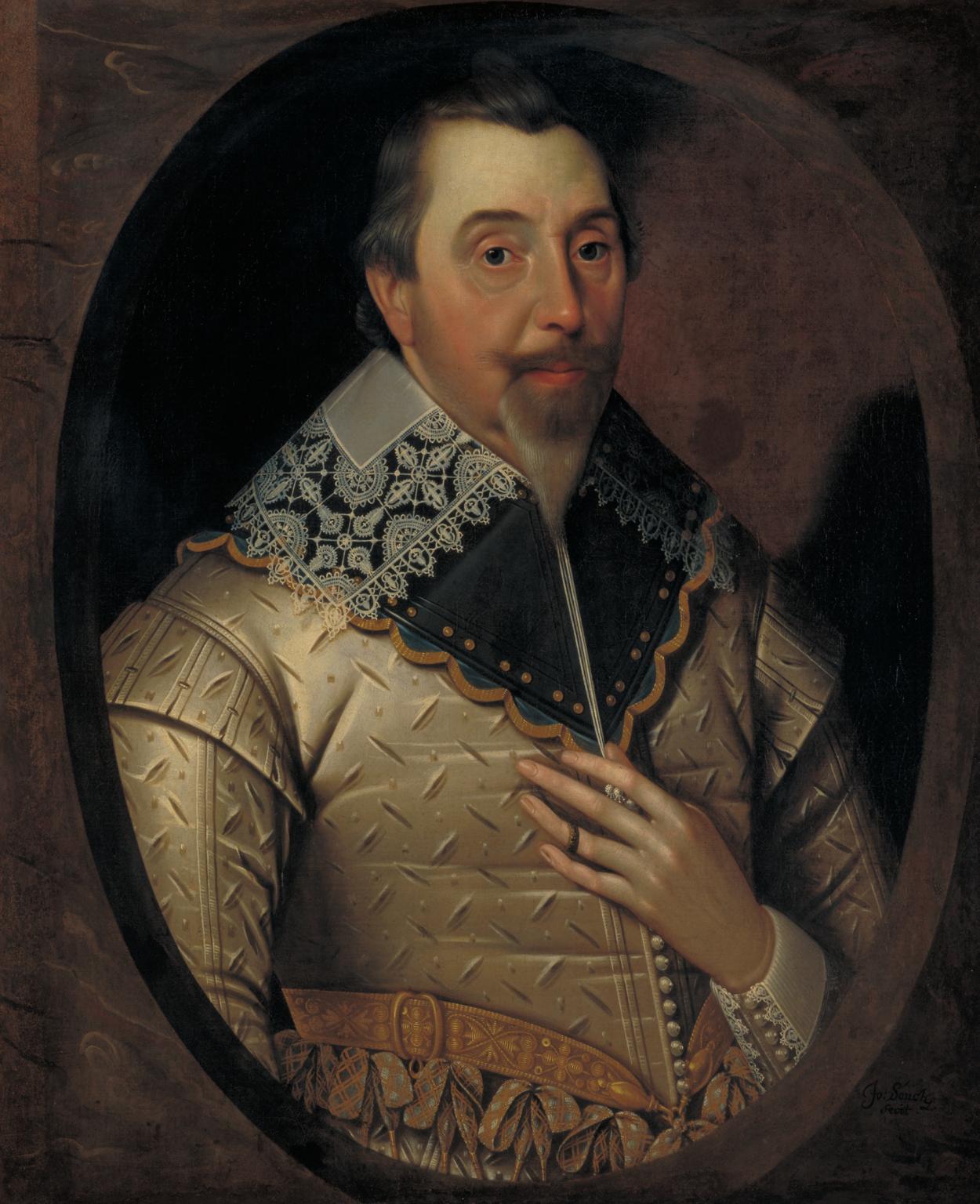
Realism
Until the nineteenth century Western art was dominated by the academic theory of History painting and High art (grand manner). Artistic conventions governed style and subject matter, resulting in artworks that often appeared artificial and removed from real life.
Then, the development of naturalism began to go hand in hand with increasing emphasis on realism of subject, meaning subjects outside the high art tradition.
The term realism was coined by the French novelist Champfleury in the 1840s and in art was exemplified in the work of his friend the painter Gustav Courbet. In practice realist subject matter meant scenes of peasant and working class life, the life of the city streets, cafes and popular entertainments, and an increasing frankness in the treatment of the body and sexual subjects.
The term generally implies a certain grittiness in choice of subject. Such subject matter combined with the new naturalism of treatment caused shock among the predominantly upper and middle class audiences for art.
Realism is also applied as a more general stylistic term to forms of sharply focused almost photographic painting irrespective of subject matter, e.g. early Pre-Raphaelite work such as John Everett Millais’ Ophelia.
from Tate Museum Website

Artistic Inspirations
Barkley L. Hendricks
One of the most influential artists to have emerged in the late 20th century, Barkley L. Hendricks revolutionized portrait painting with his post-modern depictions of cool, stylish and self-aware black subjects. Produced mostly between the late 1960s and the early 1980s, his vivid, precise paintings and photographs of everyday black Americans liberated the black body from a white-centered gaze, with subjects gifted with an unprecedented degree of regality, autonomy and self-assertiveness.
Hendricks technical brilliance, evident in his sensitivity to color and his meticulously crafted style, capture the nuances of darker skin tones and the textured articles of clothing that drape his statuesque figures, pictured against radiating monochromatic backgrounds.
Born in 1945 in Philadelphia, Pennsylvania, Hendricks attended Yale University, earning both Bachelor’s and Master’s degrees in Fine Art in 1972. Soon after he began teaching studio art at Connecticut College where he continued to teach until his retirement in 2010.
During the mid-1960s, Hendricks experienced an important artistic realization that altered the direction of his life. While traveling in Europe in his twenties, Hendricks found himself at once awe-struck by the portraits of Old Master painters such as Rembrandt and Velásquez he saw and simultaneously dismayed by these same museums’ collective failure to represent people and artists of color.
This experience led Hendricks to his decision to create portraits of black subjects, many of whom he knew personally, and imbue them with the elevated dignity, vulnerability and immediacy they had long been denied.
Coaxing his knowledge of art history with his direct engagement in black popular culture, Hendricks forged a distinct style, ambiguously positioned between the provocative playfulness of Pop Art, the critical gravitas of Conceptual art and the incandescent grandeur of Baroque-style portraiture. His formally sophisticated identity-driven representations have set a critical precedent for a younger generation of artists including Kehinde Wiley, Kerry James Marshall and many more.
Hendricks had his first painting retrospective, Barkley L. Hendricks: Birth of the Cool, at the Nasher Museum of Art in 2008, curated by Trevor Schoonmaker, which then traveled to other prestigious museums in the United States. Hendricks’s work is also included in numerous public collections both in the US and abroad, including the Whitney Museum of American Art, New York; the National Portrait Gallery, Washington, DC; the National Gallery of Art , Washington, DC; Tate Modern, London; the Studio Museum in Harlem; the Philadelphia Museum of Art; Rubell Family Collection, Miami; and the Nasher Museum of Art, Durham, NC.
from Sothebys Website
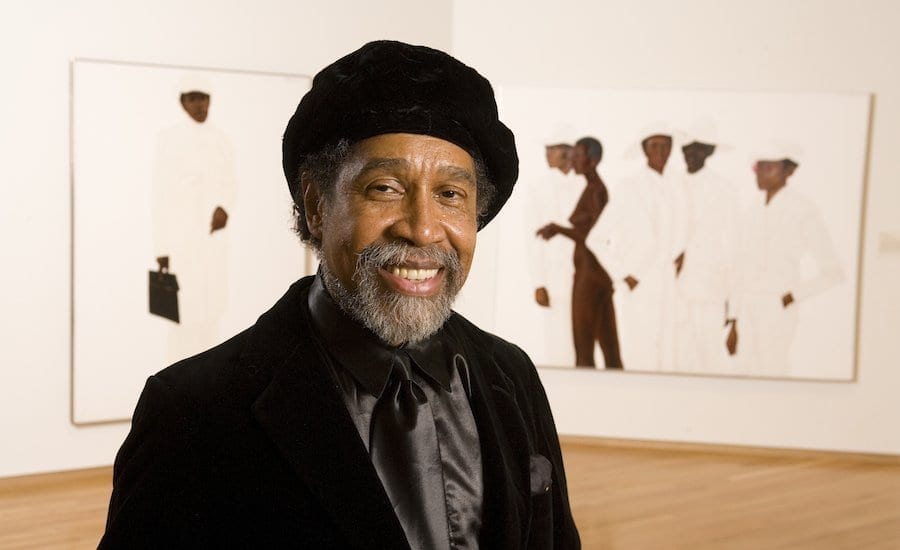
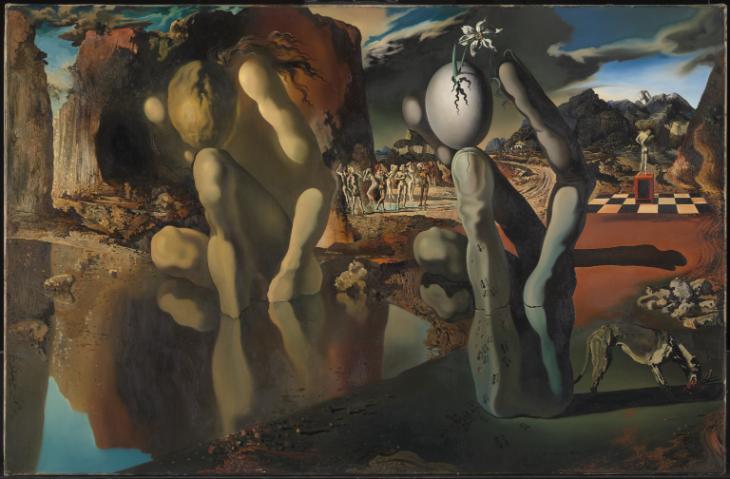
Surrealism
A twentieth-century literary, philosophical and artistic movement that explored the workings of the mind, championing the irrational, the poetic and the revolutionary
Surrealism aimed to revolutionise human experience, rejecting a rational vision of life in favour of one that asserted the value of the unconscious and dreams. The movement’s poets and artists found magic and strange beauty in the unexpected and the uncanny, the disregarded and the unconventional.
The word ‘surrealist’ (suggesting ‘beyond reality’) was coined by the French avant-garde poet Guillaume Apollinaire in a play written in 1903 and performed in 1917. But it was André Breton, leader of a new grouping of poets and artists in Paris, who, in his Surrealist Manifesto (1924), defined surrealism as:
pure psychic automatism, by which one proposes to express, either verbally, in writing, or by any other manner, the real functioning of thought. Dictation of thought in the absence of all control exercised by reason, outside of all aesthetic and moral preoccupation.
Many surrealist artists used automatic drawing or writing to unlock ideas and images from their unconscious minds, and others sought to depict dream worlds or hidden psychological tensions.
Attractive to writers, artists, photographers and filmmakers from around the world who shared this aggressive rejection of conventional artistic and moral values, surrealism quickly became an international movement. It exerted enormous impact on the cultural life of many countries in the interwar years and later.
Many argue that surrealism, as an identifiable cultural movement, ended with the death of Breton in 1966. Others believe that it remains a vital and relevant force today.
While ‘surreal’ is often used loosely to mean simply ‘strange’ or ‘dreamlike’, it is not to be confused with ‘surrealist’ which describes a substantial connection with the philosophy and manifestations of the surrealist movement.
from Tate Museum Website
Artistic Inspirations
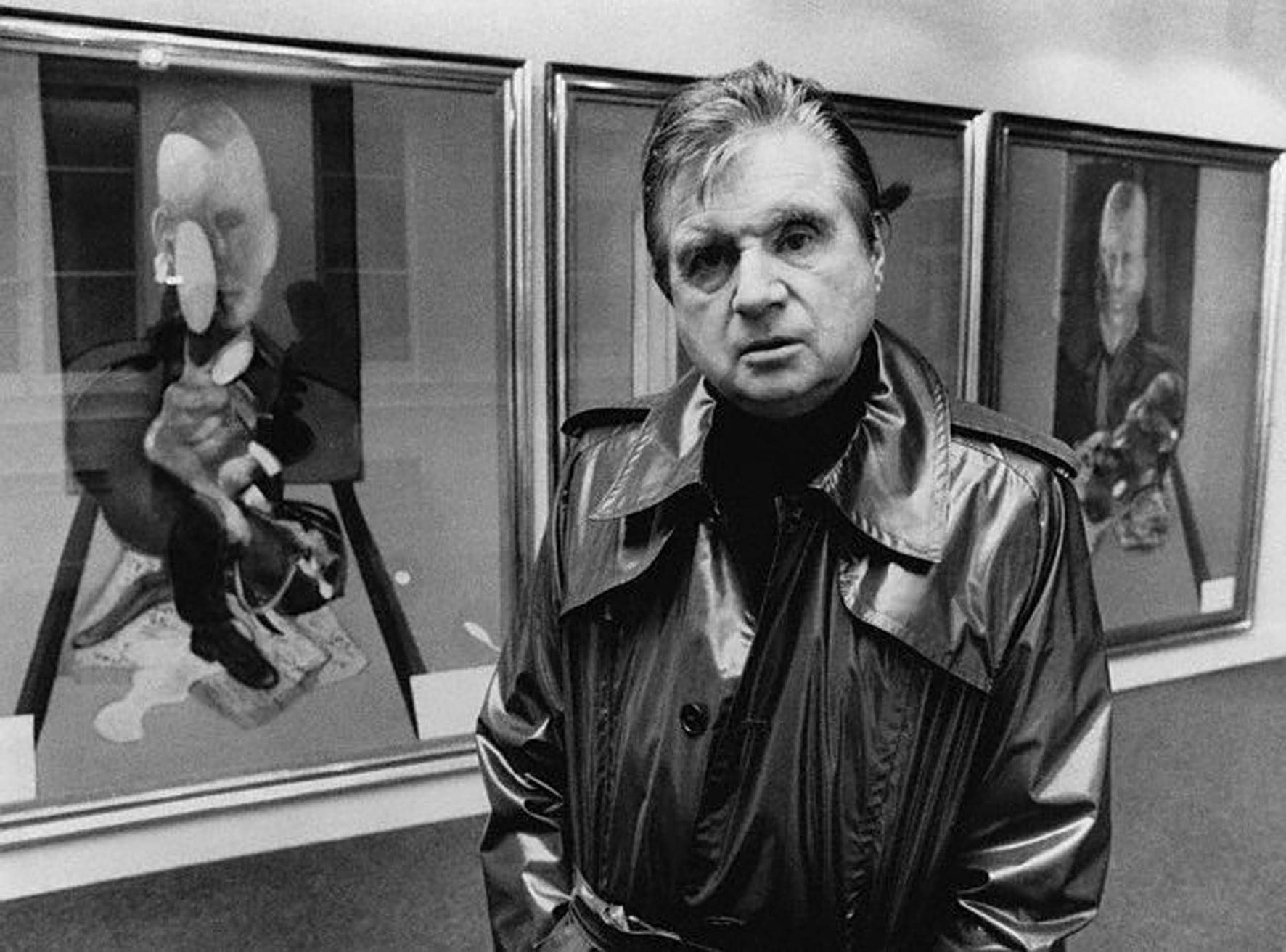
Francis Bacon
One of the major British artists of the post-World War II period, Francis Bacon is renowned for his paintings of single subjects represented in isolation – in empty rooms and cages, or against black walls – their faces and figures distorted in grotesque style. The artist’s emotionally charged, raw vision of human beings is a testament to his understanding of the suffering and alienation that afflicted mankind during the second half of the 20th century.
Born on 28 October 1909, to English parents in Dublin, Ireland, Bacon left home at seventeen and travelled to Berlin, then Paris. Settling in London in 1925, he began working as an interior decorator and later started to paint. Although his self-taught work started attracting interest in the late 1930s, his breakthrough came in 1944, with the triptych Three Studies for Figures at the Base of a Crucifixion, whose distorted subjects, rendered in dark colors and rough brushwork, firmly established his style.
Starting in the mid-1960s, the artist mostly produced portraits of friends and drinking companions, and following the 1971 suicide of his lover, George Dyer, his art became inward-looking and preoccupied with the passage of time, as evidenced in his Study for a Self-Portrait –Triptych, 1985–86. Renowned for his carousing and his notoriously cluttered London studio, Bacon died while vacationing in Madrid, Spain, on 28 April 1992.
His works can be found in the collections of the Art Institute of Chicago, the Hirshhorn Museum and Sculpture Garden, Washington DC, and the Museum of Modern Art, New York. According to Sotheby’s Mei Moses, the average compound annual return for Francis Bacon resold at auction between 2003 and 2017 was 13.9%. 87.1% of 31 such works increased in value.
from Sothebys Website
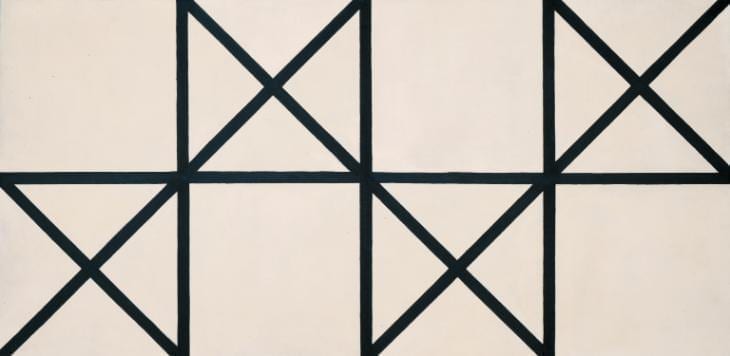
Constructionism
Constructionism was an extension of constructivism in Britain from about 1950, with artists using naturally occurring proportional systems and rhythms to underpin their geometrical art.
Victor Pasmore, Kenneth Martin, Mary Martin and Anthony Hill are the key figures associated with the movement. They were inspired by the theories of the American artist Charles Biederman and explored the legacy of the ‘constructive art’ made in the 1930s by Ben Nicholson, Barbara Hepworth and Naum Gabo, whose contribution to the Russian constructivism was exemplary.
Anthony Hill insisted on using the term constructionism for the British phenomenon, but constructivism is more commonly used.
from Tate Museum Website
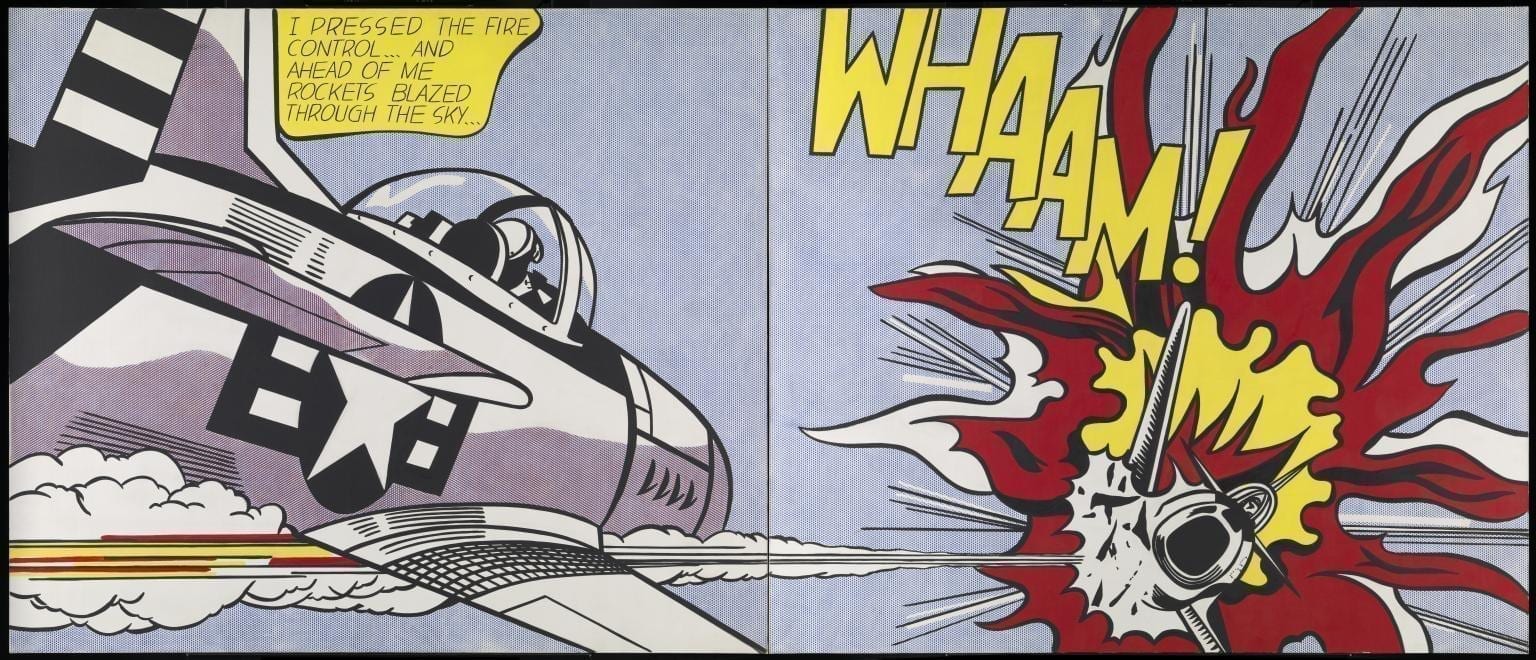
Pop art
Pop art is an art movement that emerged in the 1950s and flourished in the 1960s in America and Britain, drawing inspiration from sources in popular and commercial culture. Different cultures and countries contributed to the movement during the 1960s and 70s.
Emerging in the mid 1950s in Britain and late 1950s in America, pop art reached its peak in the 1960s. It began as a revolt against the dominant approaches to art and culture and traditional views on what art should be.
Young artists felt that what they were taught at art school and what they saw in museums did not have anything to do with their lives or the things they saw around them every day. Instead they turned to sources such as Hollywood movies, advertising, product packaging, pop music and comic books for their imagery.
In 1957 pop artist Richard Hamilton listed the ‘characteristics of pop art’ in a letter to his friends the architects Peter and Alison Smithson:
Pop Art is: Popular (designed for a mass audience), Transient (short-term solution), Expendable (easily forgotten), Low cost, Mass produced, Young (aimed at youth), Witty, Sexy, Gimmicky, Glamorous, Big business
Modernist critics were horrified by the pop artists’ use of such ‘low’ subject matter and by their apparently uncritical treatment of it. In fact pop both took art into new areas of subject matter and developed new ways of presenting it in art and can be seen as one of the first manifestations of postmodernism.
AMERICAN POP VS. BRITISH POP
Although they were inspired by similar subject matter, British pop is often seen as distinctive from American pop.
Early pop art in Britain was fuelled by American popular culture viewed from a distance, while the American artists were inspired by what they saw and experienced living within that culture.
In the United States, pop style was a return to representational art (art that depicted the visual world in a recognisable way) and the use of hard edges and distinct forms after the painterly looseness of abstract expressionism. By using impersonal, mundane imagery, pop artists also wanted to move away from the emphasis on personal feelings and personal symbolism that characterised abstract expressionism.
In Britain, the movement was more academic in its approach. While employing irony and parody, it focused more on what American popular imagery represented, and its power in manipulating people’s lifestyles. The 1950s art group The Independent Group (IG), is regarded as the precursor to the British Pop art movement.
from Tate Museum Website
Artistic Inspirations
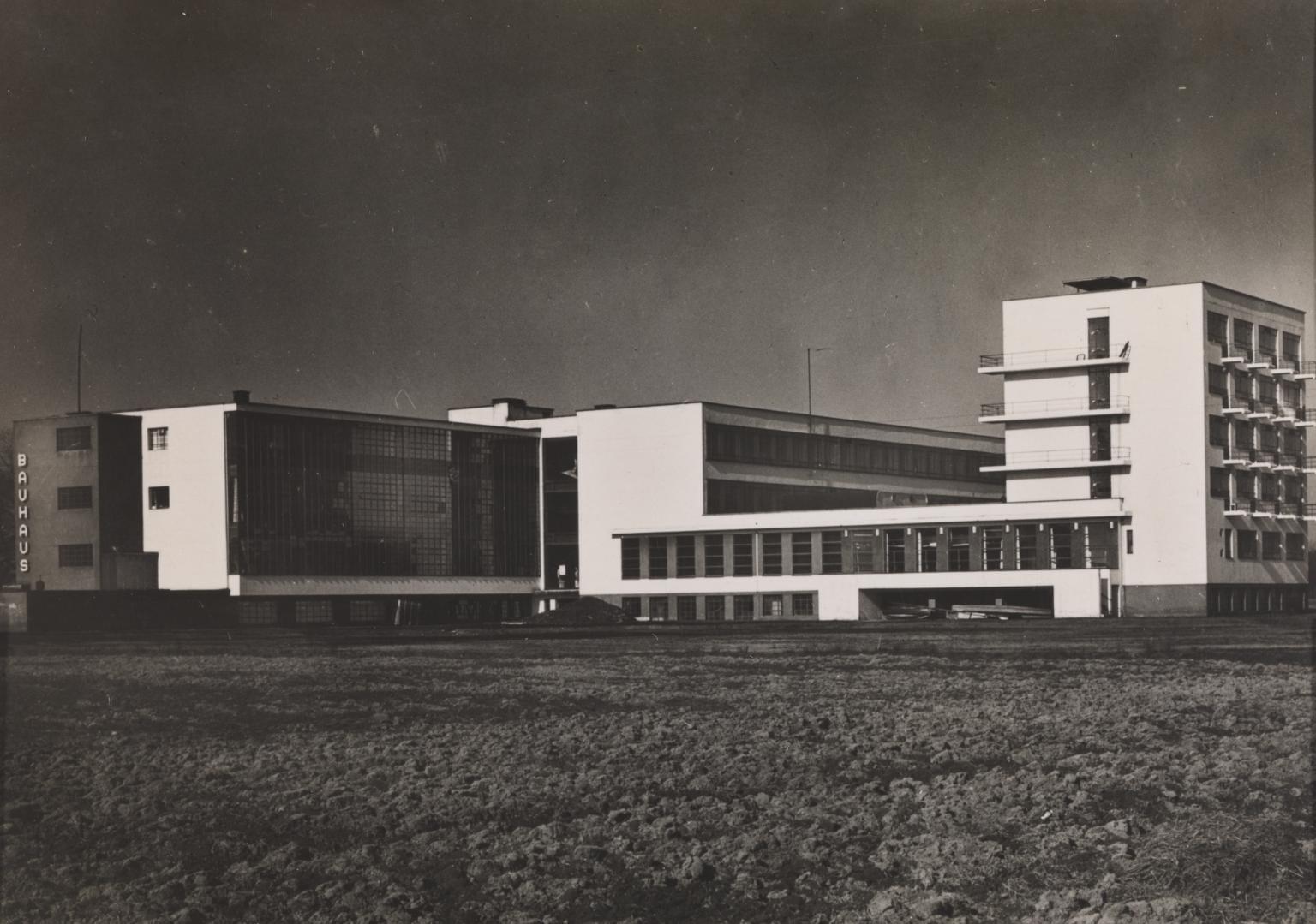
Bauhaus
Bauhaus was a revolutionary school of art, architecture and design established by Walter Gropius at Weimar in Germany in 1919.
The Bauhaus teaching method replaced the traditional pupil-teacher relationship with the idea of a community of artists working together. Its aim was to bring art back into contact with everyday life, and architecture, performing arts, design and applied arts were therefore given as much weight as fine art.
The name is a combination of the German words for building (bau) and house (haus) and may have been intended to evoke the idea of a guild or fraternity working to build a new society. Teachers included Wassily Kandinsky, Paul Klee, László Moholy-Nagy and Josef Albers.
The Bauhaus moved from Weimar to Dessau in 1925–6 where Gropius created a new building for the school. In 1932 it moved to Berlin where it was closed in 1933 by the Nazis.
Its influence was immense, especially in the USA, where many artists moved before and during the Second World War.
from Tate Museum Website

Biomorphic
Biomorphic forms or images are ones that while abstract nevertheless refer to, or evoke, living forms such as plants and the human body.
Biomorphic comes from combining the Greek words ‘bios’, meaning life, and ‘morphe’, meaning form.
The term seems to have come into use around the 1930s to describe the imagery in the more abstract types of surrealist painting and sculpture particularly in the work of Joan Miró and Jean Arp. Henry Moore and Barbara Hepworth also produced some superb biomorphs at that time, and later so did Louise Bourgeois.
from Tate Museum Website
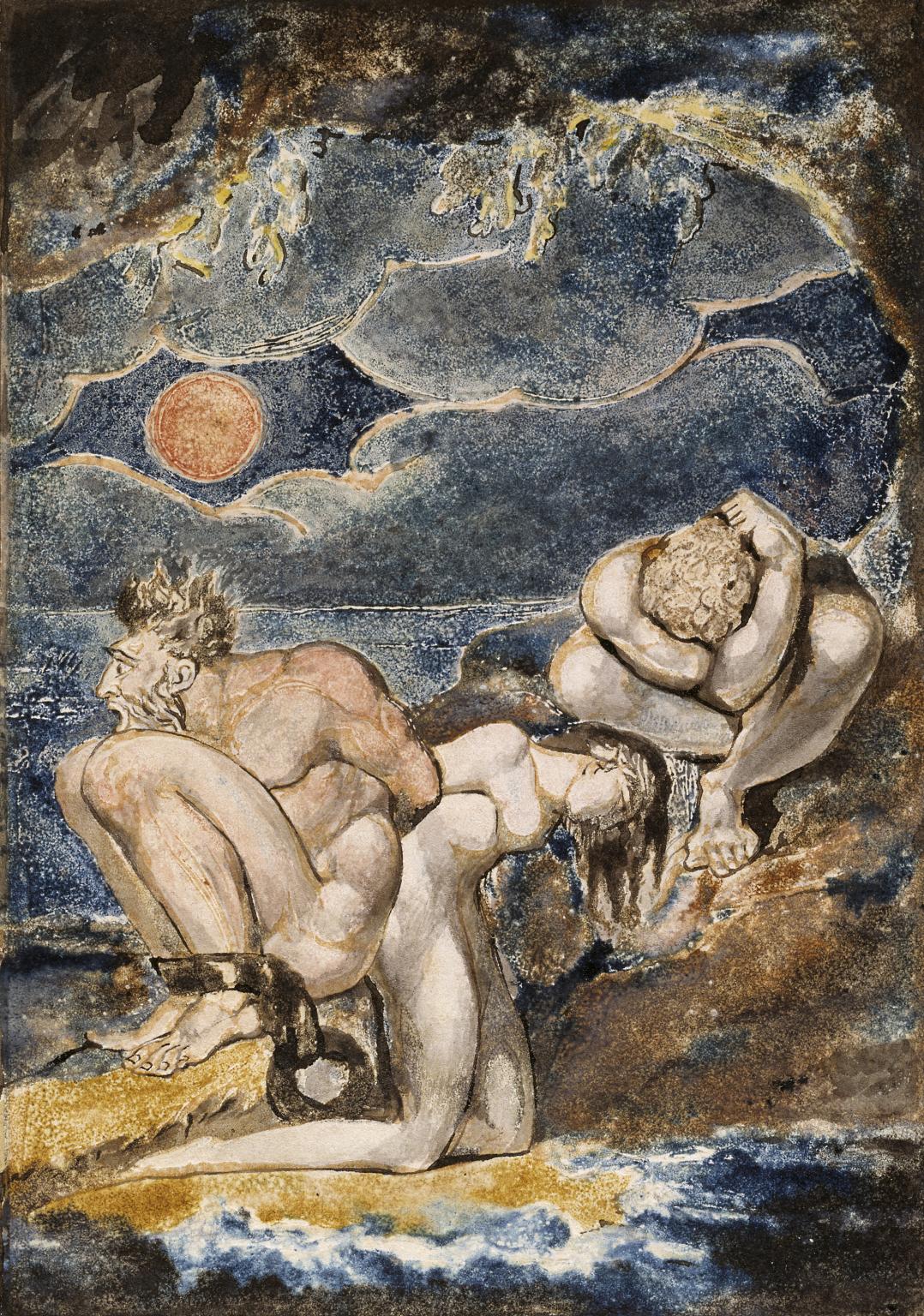
Romanticism
Term in use by the early nineteenth century to describe the movement in art and literature distinguished by a new interest in human psychology, expression of personal feeling and interest in the natural world.
This complex shift in attitudes away from the dominant classical tradition was at its height from about 1780 to 1830, but continued to be an influence long after that. The overall characteristic was a new emotionalism in contrast to the prevailing ideas of classical restraint.
In British art, Romanticism was embraced in new responses to nature in the art of John Constable and J.M.W. Turner. Visionary artist William Blake examined man’s place in the cosmos and his relationship to God as well as exploring new ways of looking at human history. Other significant painters of history subjects were Henry Fuseli, James Barry and John Hamilton Mortimer.
Later phases of the Romantic movement in Britain embraced Pre-Raphaelites and symbolism.
from Tate Museum Website
Artistic Inspirations
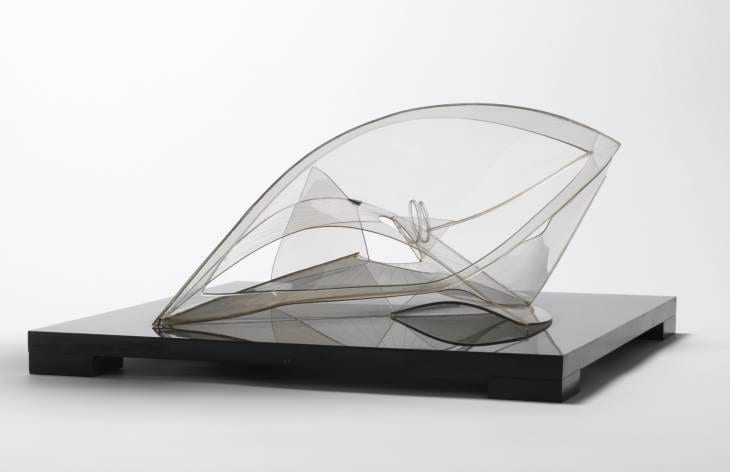
Constructivism
The constructivists believed art should directly reflect the modern industrial world. Vladimir Tatlin was crucially influenced by Pablo Picasso’s cubist constructions (Construction 1914) which he saw in Picasso’s studio in Paris in 1913. These were three-dimensional still lifes made of scrap materials. Tatlin began to make his own but they were completely abstract and made of industrial materials.
By 1921 Russian artists who followed Tatlin’s ideas were calling themselves constructivists and in 1923 a manifesto was published in their magazine Lef:
The material formation of the object is to be substituted for its aesthetic combination. The object is to be treated as a whole and thus will be of no discernible ‘style’ but simply a product of an industrial order like a car, an aeroplane and such like. Constructivism is a purely technical mastery and organisation of materials.
Constructivism was suppressed in Russia in the 1920s but was brought to the West by Naum Gabo and his brother Antoine Pevsner and has been a major influence on modern sculpture.
from Tate Museum Website
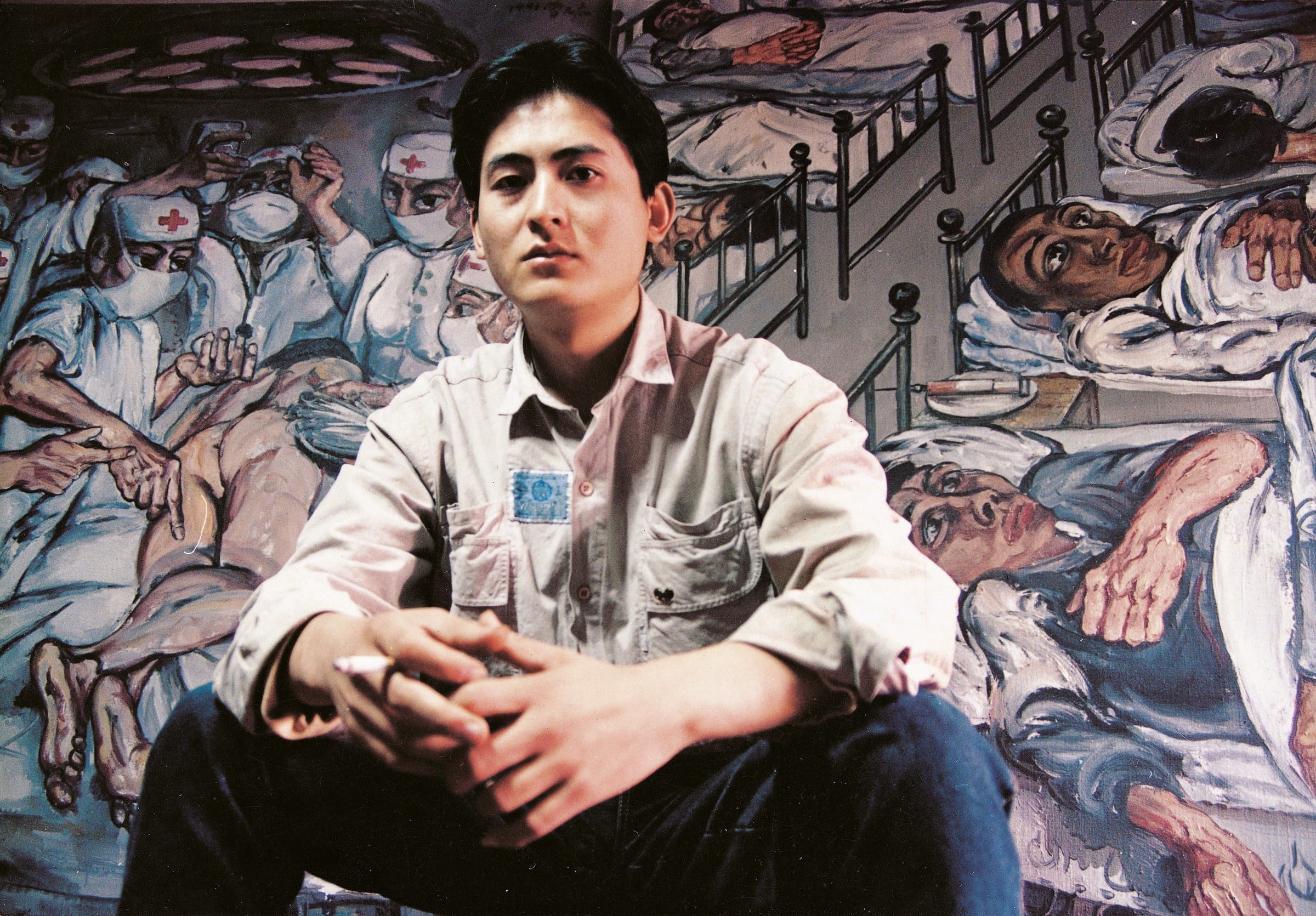
Zeng Fanzhi
Zeng Fanzhi’s evocative and emotionally direct paintings capture the dissonance of modern life with stunning psychological acuity. While his figures are often rendered against empty or abstracted backgrounds, Zeng suggests as much about his subjects’ wider social and political contexts as their inner worlds.
With a unique synthesis of Eastern and Western reference points—from lively brushwork and enlarged features recalling German Expressionism to ironic appropriations of Communist-era social realist tropes – Zeng has become a preeminent chronicler of the rapidly globalizing face of contemporary China.
Born in Wuhan, China, in 1964, Zeng grew up during Mao’s Cultural Revolution. He attended Hubei Academy of Fine Arts, where he developed an interest in the German Expressionist painters; their influence is evident in the unflinching corporeality of Zeng’s early Hospital and Meat series. In 1993, Zeng moved to Beijing, and soon thereafter his work underwent a notable stylistic shift.
In his famous “Mask” series, Zeng explores themes of superficiality and alienation by covering his subject’s faces with leering, empty-eyed masks, which obscure the pain and humanity so readily apparent in his early works.
Zeng’s style has continued to evolve throughout a career marked by virtuosic technical dexterity. In recent years, he has drawn on Chinese painterly traditions, moving further toward abstraction in both landscapes and portraiture.
One of the most celebrated artists working today, Zeng’s work is highly sought after on the auction market. In October 2013, Sotheby’s Hong Kong sold Zeng’s The Last Supper for $23.3 million, a record for contemporary Asian art. Zeng has been featured in numerous group and solo shows around the world.
He represented China at the 2009 Venice Biennale, and in 2013 the Musée d’Art Moderne de la Ville de Paris mounted a major retrospective of his work. His paintings can be found in the permanent collections of the Los Angeles County Museum of Art, San Francisco Museum of Modern Art, Musée d’Art Moderne de la Ville de Paris, and National Art Museum of China, Beijing.
from Sothebys Website
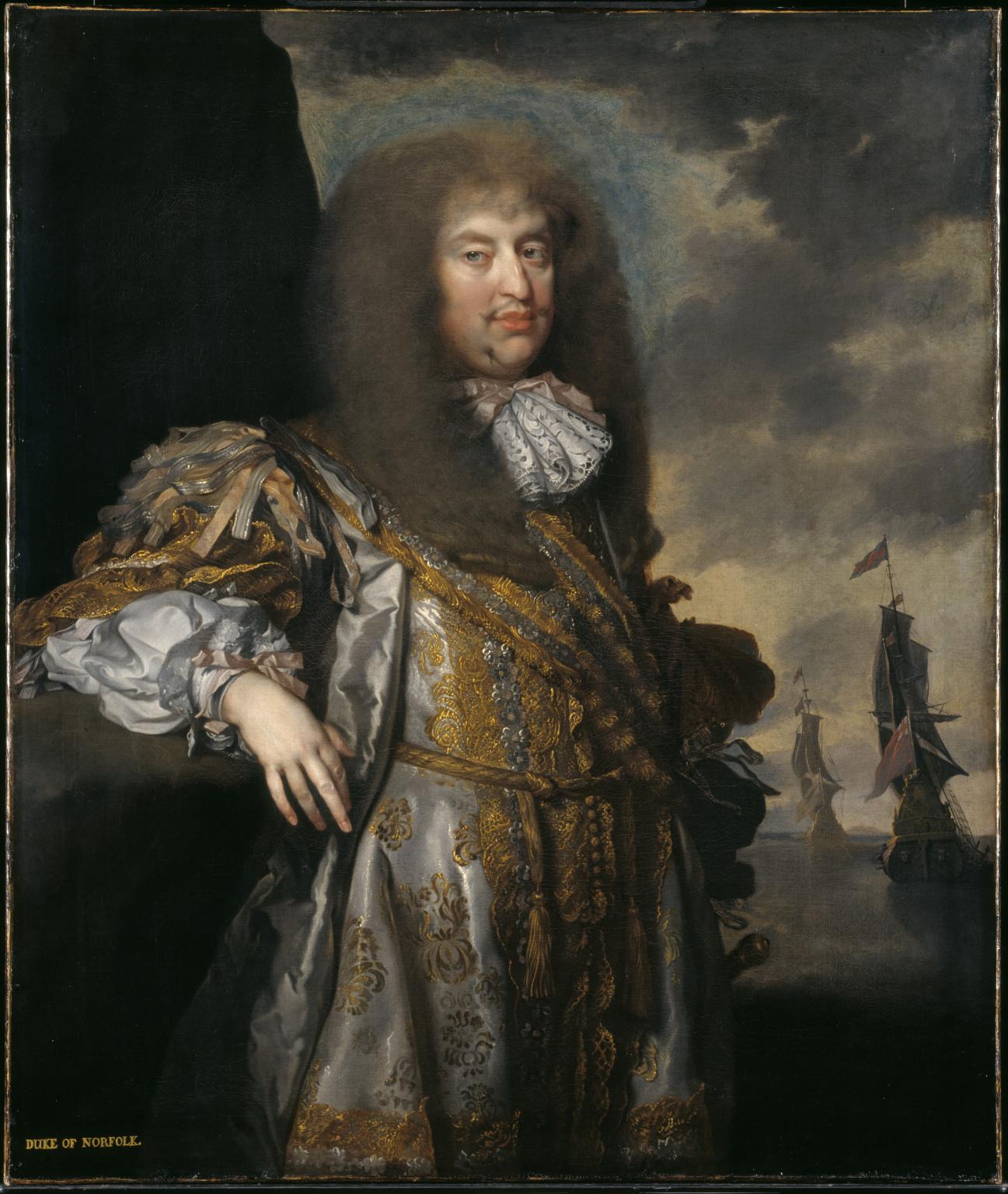
Baroque
Baroque was the dominant style in art and architecture of the seventeenth century, characterized by self-confidence, dynamism and a realistic approach to depiction.
At its height in Rome from around 1630–1680, Baroque is particularly associated with the Catholic Counter-Reformation. Its dynamic movement, bold realism (giving viewers the impression they were witnessing an actual event), and direct emotional appeal were ideally suited to proclaiming the reinvigorated spirit of the Catholic Church.
Although originating in Rome, Baroque was influential across Europe. It was also used to depict many non-religious themes and can be seen in portraits, still lifes as well as mythical subjects.
Greatest exponents include sculptor and architect Bernini in Rome; and in northern Europe, Sir Peter Paul Rubens, whose ceiling decorations commissioned by Charles I (Stuart) for the Banqueting Hall in London are still in place. Rubens’s great pupil Sir Anthony Van Dyck also worked in a Baroque style in Britain, and was Charles’s court painter from 1632 until his death in 1641.
British followers include William Dobson, Sir Peter Lely, Jacob Huysmans, Sir Godfrey Kneller, and painters of wall and ceiling decorations such as Antonio Verrio and Sir James Thornhill.
from Tate Museum Website
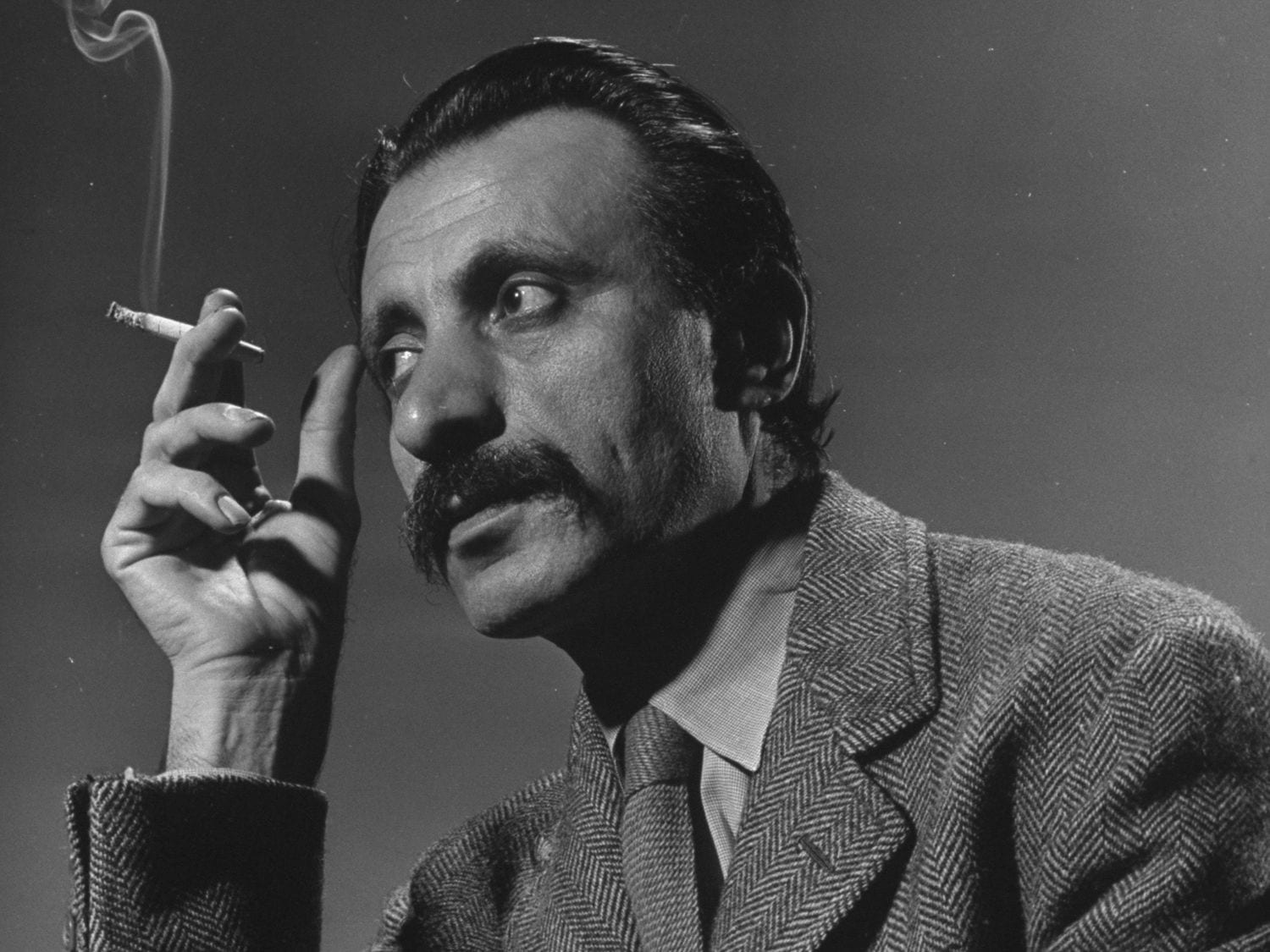
Arshile Gorky
Known for his profound impact on the Abstract Expressionist movement, the Armenian-American painter Arshile Gorky has been hailed as the last Surrealist and a crucial link between pre-war European modernism and the New York School.
While he avidly studied the early 20th-century masters, Gorky evolved his own distinctive style, synthesizing surrealism and Expressionism with his own lyrical approach to color and form. Reflecting a life marked by extreme trauma, tragedy and artistic innovation, Gorky’s oeuvre is notable for its tempestuous, explosive energy and its seminal influence on post-war American art.
Born Vosdanik Manoog Adoyan c. 1902-1904 in Ottoman Turkey, Gorky survived the height of the Armenian genocide. In 1908, his father fled to the United States; his mother died of starvation in 1919, a lasting trauma that he affectingly memorialized in The Artist and His Mother (circa 1926–1936). In 1920, Gorky joined his father in the United States, where he would change his name to Arshile Gorky, in honor of the Russian writer Maksim Gorky.
As a young artist, Gorky emulated the modern European masters, especially Cézanne, Picasso and Miró. In the 1930s, he befriended other émigré artists including Willem de Kooning and his prominence in the New York art scene rose. From 1935 to 1941, Gorky worked under the Works Progress Administration, where he met fellow painters Jackson Pollock and Mark Rothko, and designed a series of murals at Newark International Airport in New Jersey.
In the 1940s, Gorky’s style evolved toward Surrealist ideas and forms, with André Bréton hailing Gorky’s 1944 painting The Liver is the Cock’s Comb as “one of the most important paintings made in America.” The last years of Gorky’s life were marked by misfortune. In 1946, he was diagnosed with cancer, and shortly thereafter, his wife left him for his friend and fellow painter Roberto Matta. In 1948, Gorky suffered a broken neck in a car accident, leaving his painting arm temporarily paralyzed. He took his own life in 1948.
Today, Gorky’s paintings are held in the permanent collections of the Museum of Modern Art, New York; Whitney Museum of American Art, New York; the National Gallery of Art, Washington, DC; the Art Institute of Chicago; and the Tate Gallery, London. In 2009-10, a major traveling retrospective of his work was exhibited at the Philadelphia Museum of Art, the Tate Modern in London and the Museum of Contemporary Art in Los Angeles.
from Sothebys Website
Artistic Inspirations
See our Artistic Collection that we created from this inspirations





